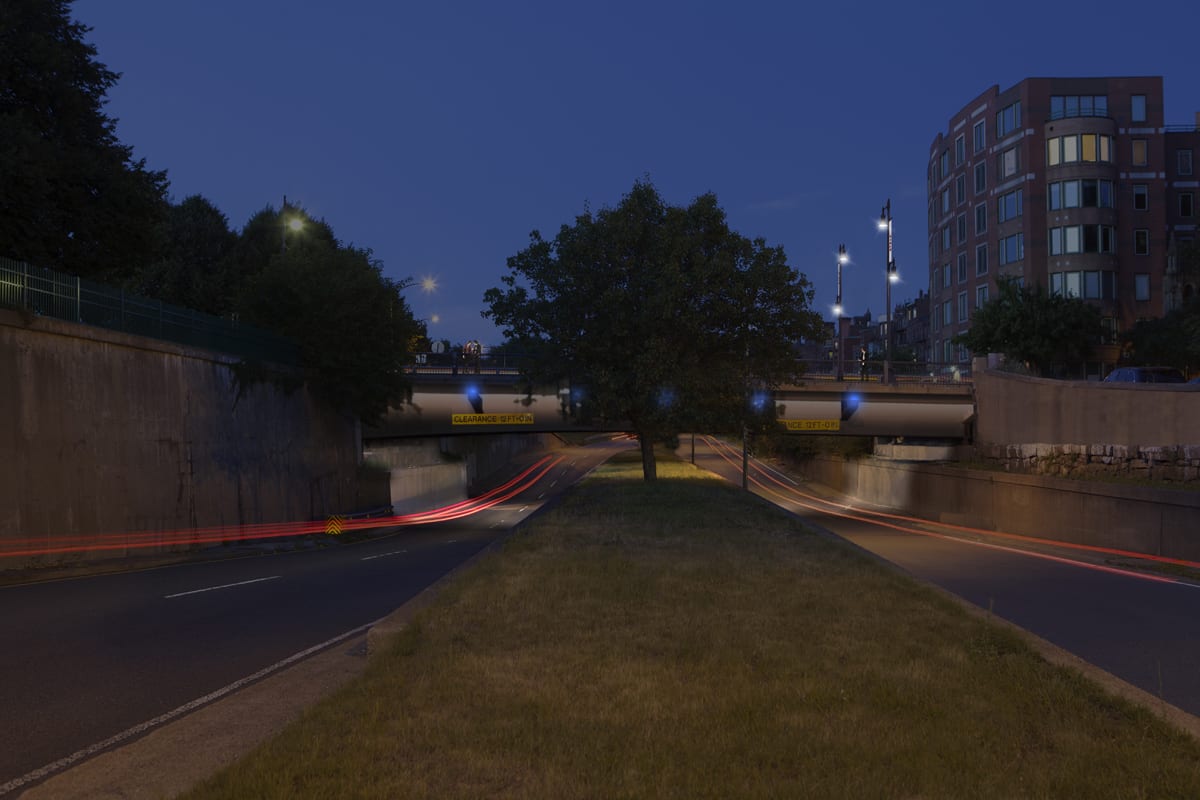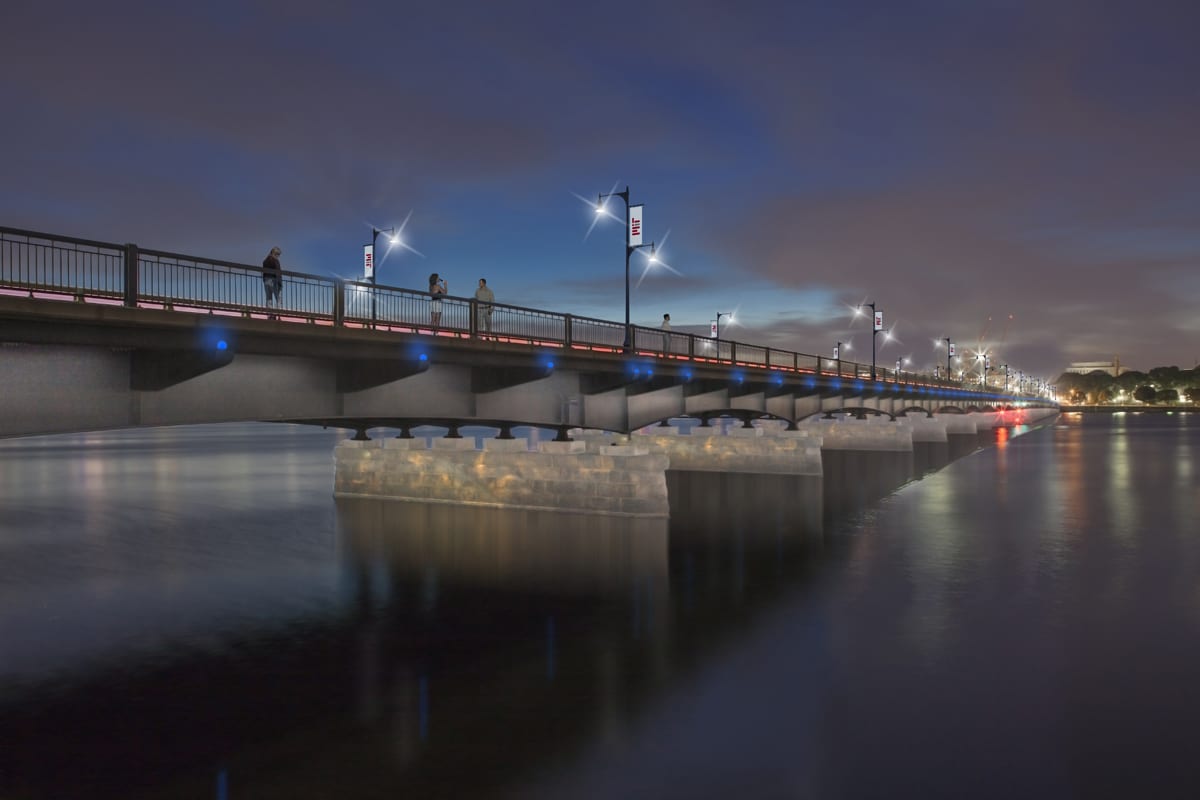
Rosales + Partners, with ARUP, winners of several design competitions for bridges, including the Woodrow Wilson Memorial Bridge in Washington, DC (COMPETITIONS, Vol. 9, #3), recently won a lighting competition for the Harvard Bridge in Boston. Historic bridges have occasionally undergone facelifts, and this is no exception. However, the fact that it turned out to be a competition was one.
In the words of the authors, this was their winning approach to the project:
“The lighting design of the Harvard Bridge considers three primary factors that weigh prominently on the architectural lighting proposal. First is the bridge as an existing historic structure; its shape and form serve as the basis upon which our ideas are generated. The second factor is the specific place of the bridge; the connection between Boston and Cambridge, the numerous visual experiences for joggers and pedestrians as well as vehicular passengers and boaters, and the inherent history and traditions associated with the bridge all play a part in the design approach. The third factor is the responsibility of designing for a landmark structure, to create an elegant visual icon that has the ability to redefine its presence during select events and holidays.
The specific elements of the lighting design are proposed to accentuate and enhance the experience of the bridge, in the following elegantly responsive gestures:
-On the bridge’s walking surface, the tradition of the Smoot measurement system, which was started in 1958 is embraced in the lighting design approach. The Smoot lighting, small, blue accent elements along the sidewalks, pays tribute to the history and traditions of the Smoot (5’-7”) measurement system, by emitting a band of light at every 10 Smoots (55.8’), a dimension which traditionally is highlighted by MIT students. In addition, we propose to use white, reflective paint to mark the 10 Smoot dimension. This sidewalk enhancement will help animate the walking experience between Boston and Cambridge while also celebrating a distinct character-defining component of the bridge.
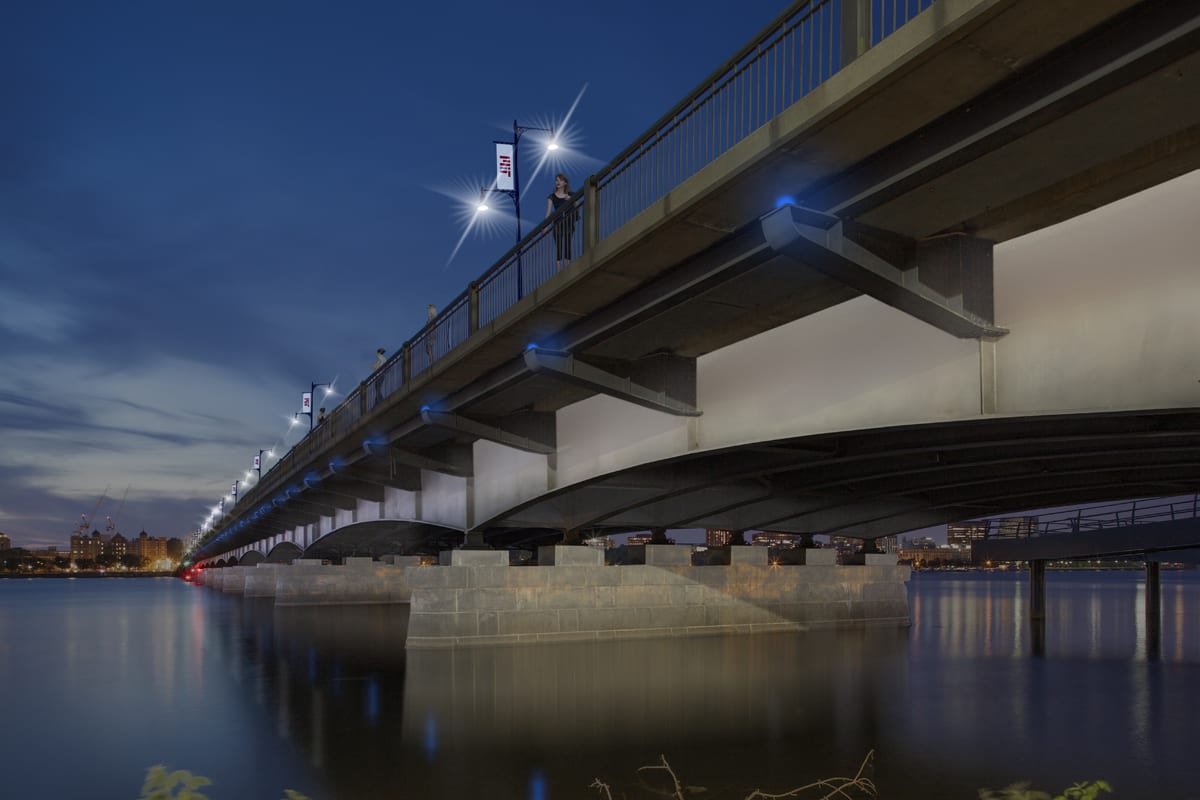
-The pole lighting along the bridge, which illuminates the roadway and adjacent sidewalks, is proposed to be refitted with all new LED light sources and relocated to correspond to every 30 Smoots (167.5’). The improved light poles will be placed in pairs in an orderly pattern instead of the current staggered arrangement. These new light sources are proposed with full cut-off optical design, which eliminates wasted light to the night sky, while enhancing the visual experience on the bridge, in particular better illuminating the sidewalks with a lower pedestrian-level fixture. The proposed design for the roadway poles is visually consistent with the historically inspired roadway light poles used on the bridge approaches on both sides of the river.
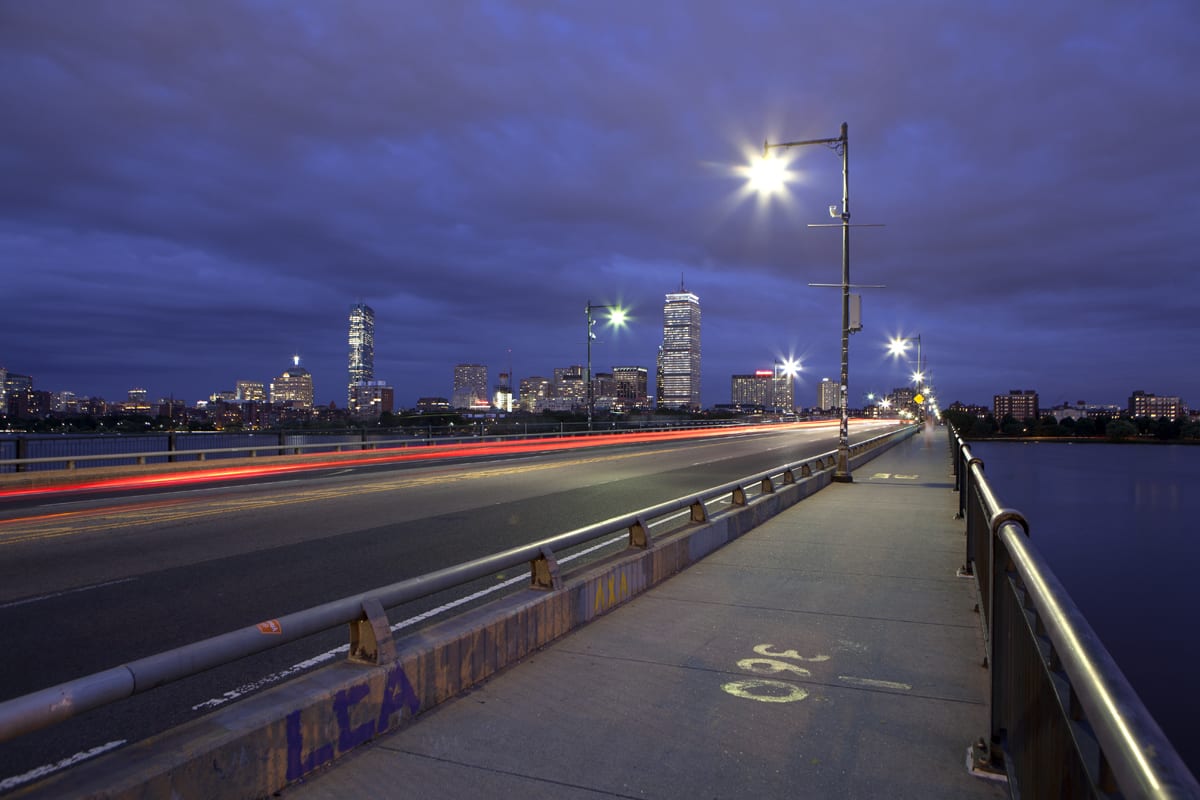 Â
 
The remaining light gestures serve to accentuate the shape and form of the historic bridge as perceived from afar along the river shorelines. The historic granite stone piers supporting the bridge are illuminated with a soft glow of warm white light from concealed light sources safely mounted to the underside of the bridge deck. The reflected light in the water adds visual dimension to the stone piers, creating a greater sense of verticality. The steel structure of the bridge, consisting of arched I-beams is illuminated with linear LED sources, to create a soft wash of crisp white light along the length of the bridge. The reflected glow of this soft line of light complements the warm reflection of the pier lighting. Finally, blue glowing accents are placed at the ends of the bridge’s cantilevered steel beams embracing the visual rhythm of the bridge structure and providing a nautical appearance.

-The bridge pier lighting, as well as the linear accent lighting is proposed to illuminate the bridge with white light for the majority of the year, to create an elegant visual icon for the community. However, on special occasions, such as holidays or significant achievements by local sports teams, the lighting has the ability to change color in tribute to the celebration. The Smoot lighting on the sidewalks could also be programmed to allow for visual movement along the entire bridge. For example they could be turned on in sequence starting on the Boston side where the Smoot measurements traditionally start at 10 Smoot (55.8’) intervals until reaching the “364.4 Smoots plus or minus one ear” on the Cambridge side.
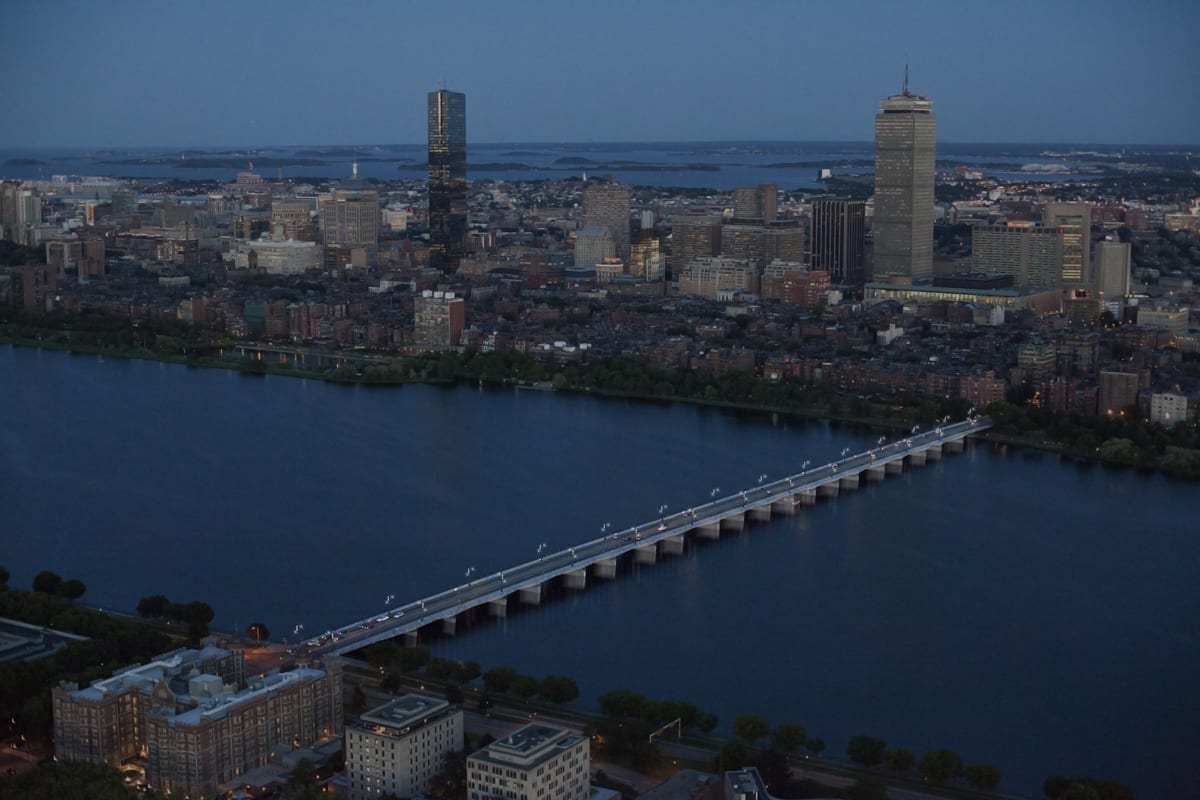
-The energy requirement for illuminating the longest bridge to span the Charles River is not an insignificant amount, and it is our intent to illuminate each aspect of the bridge with the most responsive piece of lighting equipment to achieve the design aims.
-By selecting exclusively LED sources for the lighting equipment, the luminous output of all lighting equipment can be adjusted in the field, to provide the right amount of light without over-lighting any element. By dimming the lighting in this manner, it is our expectation that all accent lighting will operate at only a 60-70% output, thus conserving energy, and extending the operational lifetime of the equipment. Many of the LED fixtures included in this design have operational lives exceeding 100,000 hours, and the dimming can extend this further.”
